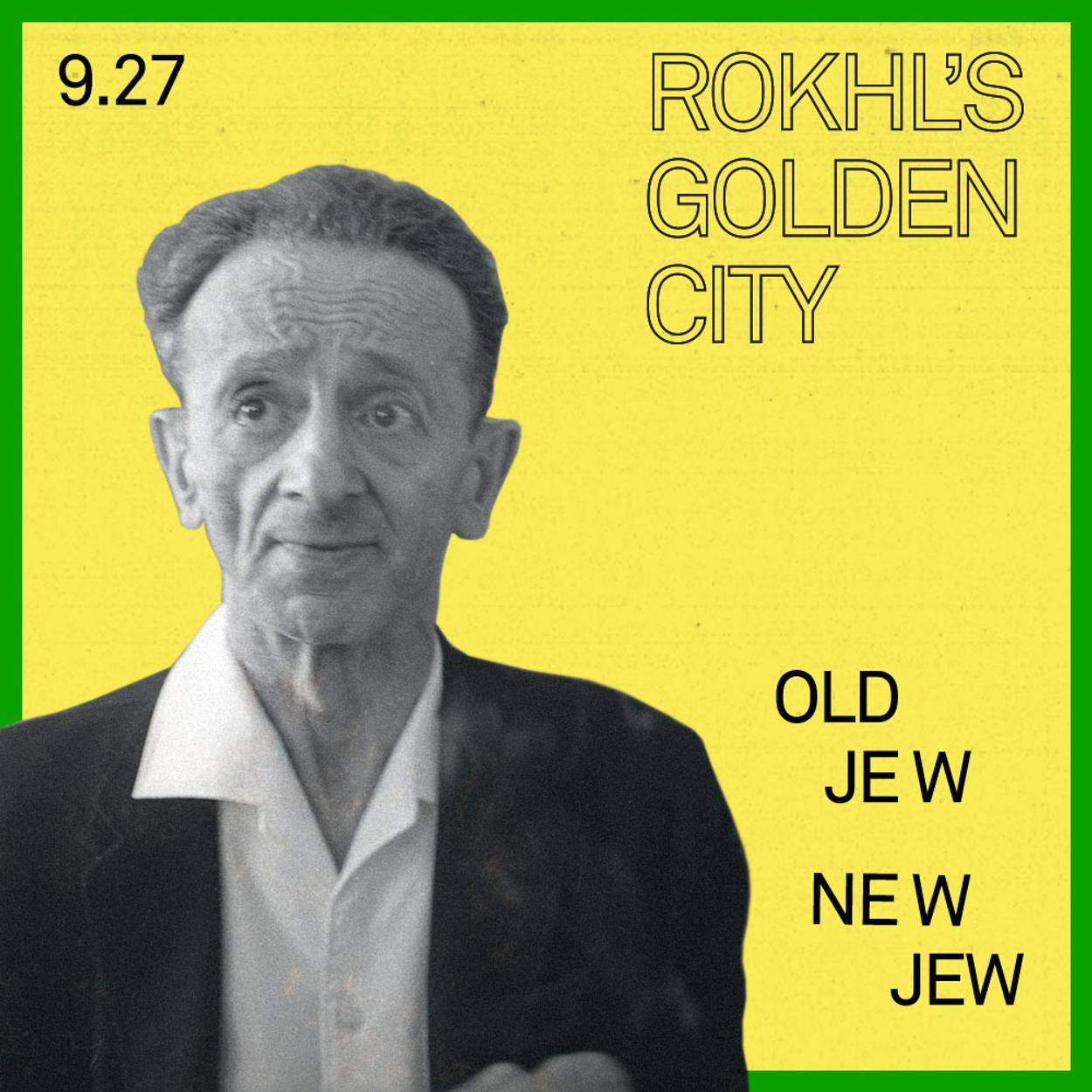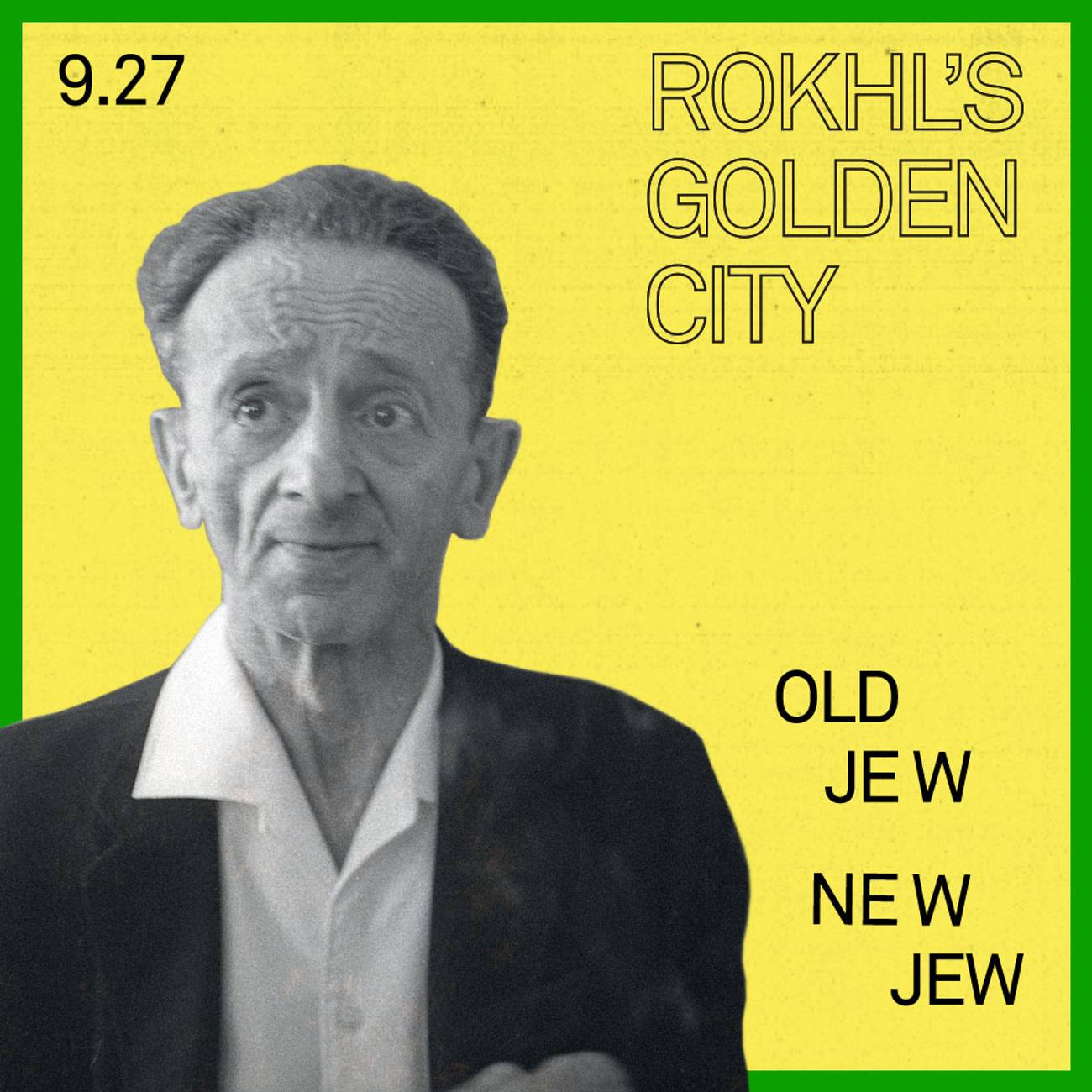What comes to mind when you hear the words “literary Yiddish folklore”? For many, it would be something like Isaac Bashevis Singer’s classic retelling of the Chelm stories for children. Those stories have an unmistakable satirical edge, but then again, we’re talking about a town of legendary fools.
Singer didn’t start exploring the folkloric Chelm material until the 1960s. But throughout the 1930s, while Singer was still mostly toiling as a journalist, the writer Itzik Manger was developing his own literary-folkloric poetics, becoming, as his YIVO Encyclopedia entry puts it, “the preeminent modernist folk bard in the annals of Yiddish culture.” What Manger found in this period was that on one hand, folklore offered a “universal repository of myth” while, on the other, the Bible offered an “eternal and untapped source of drama.” As historian David Roskies writes in the YIVO Encyclopedia entry, Manger’s uninhibited literary experiments were met with outrage from religious traditionalists—who found his depiction of biblical heroes to be “sacrilege”—“as well as Zionist-Hebraists, who correctly understood his scripturalization of the shtetl to be a species of doikayt, a valorization of the Diaspora.”
Indeed, Manger knew exactly what he was doing. This was art, but it was also shots fired in an ongoing culture war. In his essay “Folklore and Literature,” Manger argued that a living literature had to be “firmly rooted in folklore.” Without it, a civilization’s literature is bound to fail.
The scholar Haya Bar Itzhak discusses Manger’s folkloric work in a chapter of her 2010 volume Pioneers of Jewish Ethnography and Folkloristics in Eastern Europe. Manger’s belief in the critical importance of folklore, she writes, led him to observe “that the greatness of Yiddish literature is inherent in its close attachment to Jewish folklore. Thanks to its bond to Jewish folklore, Yiddish literature never lost its vital link to Jewish life.” Zionism, having linked itself with Hebrew and the ancient culture of the Bible, “was supposed to provide an alternative to the living Jewish folklore of the Diaspora and permit the creation of modern Hebrew literature. But modern Hebrew literature, having detached itself from folklore, cannot be an organic expression of the life of the Jewish people.” Like I said, shots fired.
The brand-new English translation of Manger’s 1939 novel The Book of Paradise offers readers an electrifying expression of the author’s theories. In it, an angel called Samuel Abba is summoned from Paradise to be born on Earth. According to Jewish folklore, before we are born, an angel delivers a tap on the nose to knock loose all our heavenly learning. Only then may we be born. But Samuel Abba has a clever angel friend called Little Pisser. They come up with a plan for Samuel Abba to wear a fake nose to absorb the angel’s blow, allowing him to arrive on Earth as a talking baby, full of tales of Paradise that are then recounted to an eager audience of comic shtetl types.
The Book of Paradise is not an easy book to translate. It sparkles with Manger’s song and poetry, and is brilliantly layered with literary and folkloric references. In his Paradise, the Matriarchs and Patriarchs coexist with Saint Peter, King Solomon, Elijah the Prophet, the Maggid of Dubno, and even Sara Bas Tovim, legendary composer of women’s tkhines. It is written for an audience that already knows and loves these characters, readers for whom they are at once historic and imminent. But I think that even if you are not yet familiar with the Maggid of Dubno, or day-to-day Eastern European life in 1937 (when the novel was originally serialized), you can enjoy the outrageous satire of the book. As translator Robert Adler Peckerar writes in his translator’s note, “I have relied heavily on English’s incredible arsenal of idioms with the hope of giving at least a taste of Manger’s richly expressive idiomatic Yiddish.” Indeed, you don’t have to know Yiddish to appreciate the naïve grotesquerie of calling Samuel Abba’s wise, best angel friend “Little Pisser.”
This new translation arrives at an interesting moment, when the Hebrew-Yiddish culture war is experiencing an unanticipated flare-up. The whole thing is very strange to me. The recent pro-Yiddish New York Times opinion piece that kicked things off earlier this month included a sentence saying: “For some, [modern Hebrew] symbolizes far right Israeli militarism.” Personally, I would not say something like that, especially not without at least some clarification as to whom that point of view belongs and what exactly it means.
However, it is also clear to me that the writer was observing, not endorsing, such a position. Even so, it is a historical fact that the Israeli army was central to creating the new Israeli identity. In his recent biography of David Ben-Gurion, Tom Segev notes that many European Jews who ended up in Israel were unhappy with their lives there. “Their difficult integration into Israeli society impelled Ben-Gurion to promote Israeli identity, especially among young people. It was one of the tasks he assigned to the army.”
Having just read The Book of Paradise, I think the much more relevant historical insight is one brought out by Rachel Rojanski in her indispensable book Yiddish in Israel: A History. She says that Ben-Gurion and other Labor Zionist leaders “adopted the … concept of the jump from the time of classical Judaism to the emergence of modern Jewish nationalism. Often termed ‘the historical leap,’ this idea actually meant excising from the historical continuity of the Jewish people the whole period after the destruction of the Second Temple, thus stressing the historical and cultural contrast between the Hebrew living in his own land and the Jew living in the Diaspora.” She quotes Ben-Gurion as saying that the New Jew is “willing to take up arms” and is “not weak and not frightened.”
At the moment when Ben-Gurion and other Labor Zionist leaders were quite literally seeking to erase a millennia of Ashkenazi history, Manger was writing The Book of Paradise, insisting on the vital connection between Eastern European Jews and the whole of Jewish history. Rather than being populated by saintly figures who spend their days in holy learning, Manger’s Paradise looks a lot like Manger’s then-present day, only with the action taking place on Avenue of the Patriarchs and Prophet Elijah Boulevard.
It occurred to me that the way the novel is structured, with a newly arrived resident telling wondrous tales of his previous wanderings, it can be interpreted as a satire on those who came back from Palestine with tales of the new Jewish settlements there. This Holy Land, populated with figures of holy antiquity, turns out to be a lot like life wherever Jews lived. There are rich and poor angels, angel-on-angel crime, and little angel boys even learn in the traditional heder, where their teacher is an angel with the charming name of Meyer Scabies. Merely relocating Jews to Paradise, or Palestine, could not, Manger seems to be saying, sever their connection to who they were, and who they had been.
By coincidence, a new exhibit just opened at YIVO, staking its own claim on the question of Yiddish and the Jewish state. Palestinian Yiddish is curated by YIVO’s Eddy Portnoy and though small, it offers much to consider in the way of facts and artefacts. The exhibit opens by noting that Yiddish was spoken in Palestine for hundreds of years before the advent of political Zionism, with growing numbers of Yiddish-speaking immigrants starting in the late 18th century. Fragments of Yiddish letters written in Jerusalem in the 1560s ended up in the Cairo Geniza, some of only a handful of Yiddish documents found therein. Interestingly, the letters were written by a woman by the name of Rokhl Zusman.
A number of the items on display point to the ferment of languages in contact in the area. Mordecai Kosover’s Arabic Elements in Palestinian Yiddish perfectly captures that ferment. For the book, Kosover interviewed Yiddish-speaking residents of Jerusalem and, as it says on one of the exhibit panels, the book “provides hundreds of examples of the ways in which Arabic words and phrases entered the Yiddish of the Old Yishuv.” If you were expecting those examples to lean heavily toward curse words, and I’ll admit I was, you will be disappointed. Not that it makes it any less interesting. One of the example sentences given is “Di khare’mkes zaynen oykh geven baym tsadik” or “The veiled (Muslim women) also paid a visit to the Hasidic rabbi.” I mean, there’s gotta be a whole novel hiding in that one sentence, right?
Another volume on display is Arabish-Yidisher Lerer, or Arabic-Yiddish Teacher, from 1918, a textbook for teaching Arabic to Yiddish-speakers. The author, Getsl Zelikovitsh, “served as the Arabic translator to the British explorer Lord Kitchener in Egypt. Zelikovitsh wrote this text for those joining the Jewish legion in Jerusalem.” Again, that’s a novel I’d love to read.
If you’re looking for items related to the infamous battles between supporters of Hebrew and Yiddish, those are certainly to be found in the new exhibit. However, what’s most interesting to me is the art, and the lives lived, in between the polemics.
SEE & READ: Palestinian Yiddish: A Look at Yiddish in the Land of Israel Before 1948 is on display at YIVO in the third-floor exhibition space through this winter … If you can’t get to New York, you can still read Mordecai Kosover’s textbook Palestinian Yiddish through the Yiddish Book Center’s Digital Library … Get your own copy of Itzik Manger’s The Book of Paradise, newly translated by Robert Adler Peckerar.
ALSO: Klezkanada will present an online program called “The Single-Page Zine as Yortsayt for the Future: An Introductory Zine Workshop with Jess Goldman” on Oct. 8. Tickets here ... Berlin’s Semer Ensemble “is dedicated to music recorded by Jewish artists during the Nazi period on the almost unknown, Berlin-based Semer record label.” The Ensemble will tour North America this fall, including its first appearance in New York City on Oct. 9. Get all the tour information here … Eleonore Weill and Other Fada Friends is a “singular trip through Polyphonic singing, klezmer, and Occitane dance tunes, original, old, traditional, well-known and forgotten songs of resistance, peace, justice and love in French, Occitan, and Yiddish.” Oct. 13 at Barbes in Brooklyn. More information here … I’m so proud of my friend Alex Weiser, who will be presenting a concert reading of his new opera with Stephanie Fleischmann, Tevye’s Daughters. Nov. 5 at the DiMenna Center for Classical Music, 450 West 37th St. I think this one will sell out, so get your tickets now … Tickets have just gone on sale for the Folksbiene’s new show, Amid Falling Walls (Tvishn Falndike Vent). Amid Falling Walls is “a new musical which celebrates the resilience and hope of those who endured during the Holocaust, portrayed through the power of Yiddish song.” Opening Nov. 20 at the Museum of Jewish Heritage in Battery Park City. More information and tickets here.

